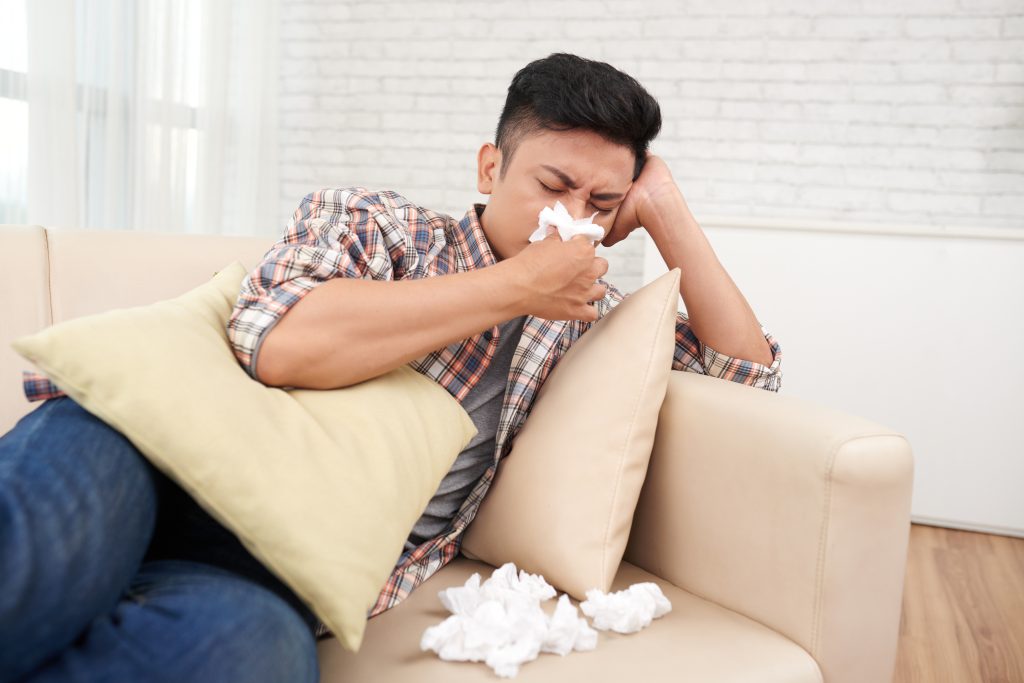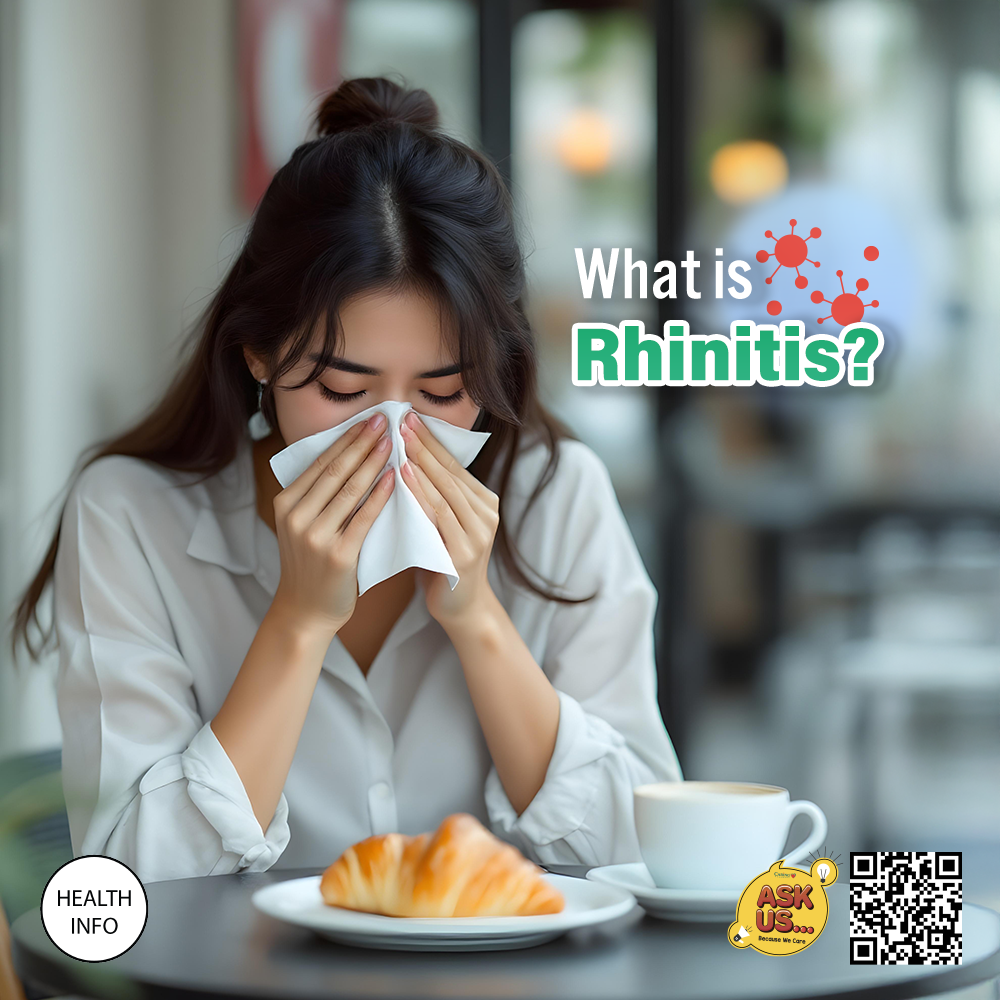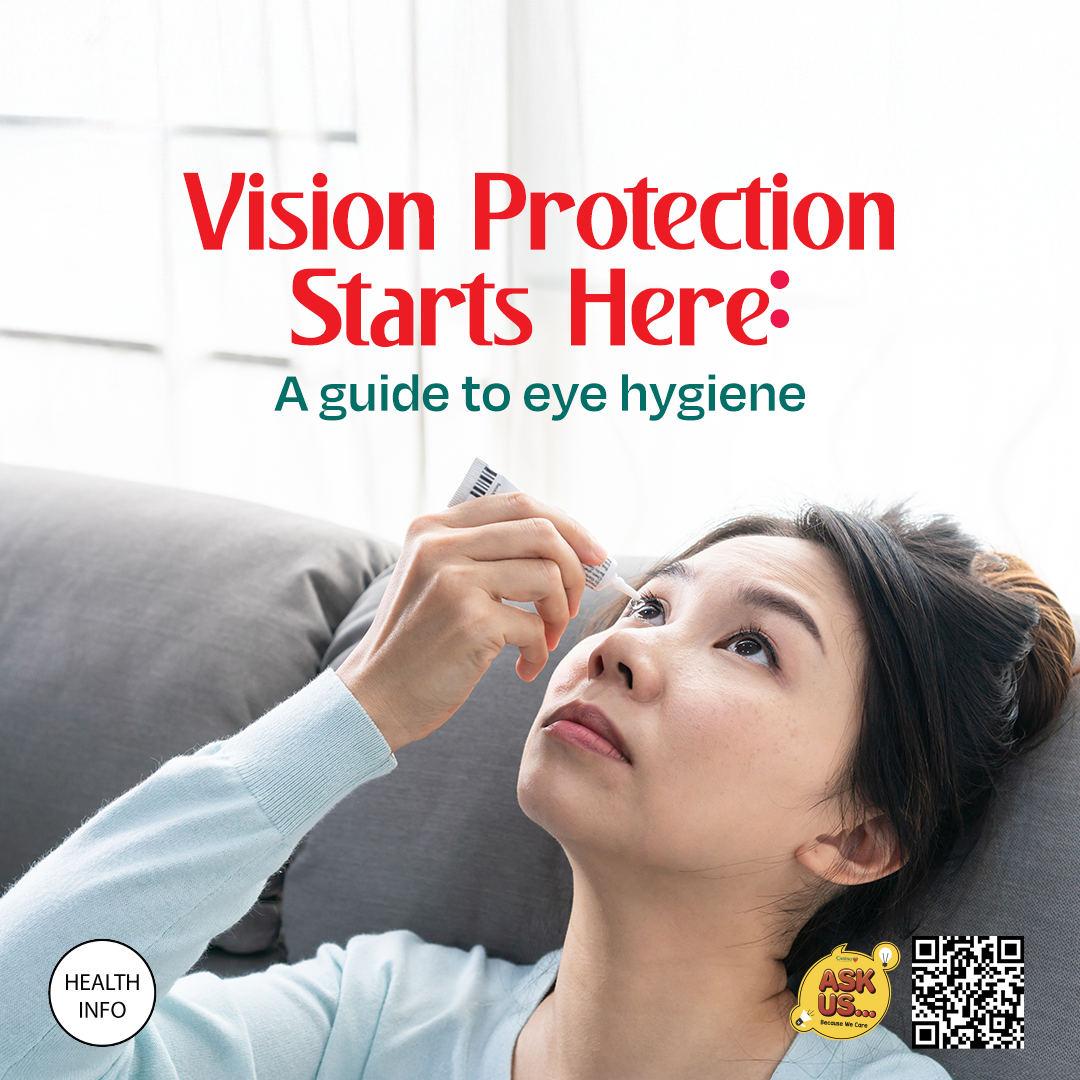
“Rhinitis” means the inflammation of the nose. Typical symptoms include nasal congestion, nasal drainage, sneezing, and/or nasal itching. It is divided into two major groups:1,2
Allergic Rhinitis
associated with the allergens including pollens, mold, dust mites and animal dander, causing inflammation of the nose.
can be further divided into seasonal, perennial or occupational allergic rhinitis.
Non-allergic rhinitis
classified according to the triggers of the rhinitis, generally not due to allergen.
includes infectious rhinitis (which is usually caused by viral infection such as common cold), irritant rhinitis, and others.
Myths VS Facts of Allergic Rhinitis:3,4,5
Allergic rhinitis is uncommon – Fact: Up to 50% of the World’s teenagers were already suffering from airway allergies, i.e. allergic rhinitis. An expected seventy to eighty percent of teenagers will be afflicted by airway allergy by the end of this decade with increasing morbidity and mortality if these statistics were extrapolated.
Only adults will get Allergic rhinitis. – Fact: It is possible to develop it at any age. It is typically present at a younger age and symptoms usually happen during young adulthood.
Allergic rhinitis is completely harmless – Fact: Untreated allergies have a significant impact on quality of life, by resulting in poor quality of sleep, tiredness and lack of concentration when working. It can also worsen other chronic respiratory problems such as asthma and sinusitis.
Common cold and allergic rhinitis are the same thing. – Fact: They are two entirely different things, even their choice of treatment may be overlapped. Persons with allergic rhinitis might also experience ocular symptoms such as itching and redness of the eyes and tearing, which do not happen in viral rhinitis. Other conditions such as sinusitis and nasal polyps may share the same symptoms as allergic rhinitis.
Pet hair causes allergies. – Fact: Pet hair does not cause allergies. Rather, the main culprit is the protein secreted in their skin and saliva that creates the problem. Cats usually cause more allergies than dogs, because they spread the proteins to their coats through grooming.
You can only start treatment when the symptoms of allergy kicks in. – Fact: Certain treatments can be started before symptoms develop, particularly for seasonal rhinitis, to protect the immune system from the assault of pollen.
Management of Allergic Rhinitis5
Use of over the counter medications.
Aids in allergic rhinitis by blocking the action of histamine that is present in high concentrations during allergic reactions.
Helps to reduce nasal secretions and relieve eye symptoms such as itching, tearing, redness.
Possess some, but limited effects of congestions.
Avoidance of allergen
Successful treatment of allergic rhinitis should involve allergen avoidances as specific allergens are the main starting point of allergic rhinitis pathophysiology.
⇒ When specific sensitization is confirmed and adequate avoidance is possible, precautions such as utilizing allergen-impermeable bedding covers for mattress and pillow can be performed.
Nasal saline lavage
Nasal saline lavage using salt water offers minor decongestant benefits and improves clinical outcomes when used in conjunction with oral antihistamines and other pharmacological approaches.
Works by making the mucus thinner and easier to remove and aids in washing off some of the allergens from the nose that cause irritation.
Medical devices
Contain sprays that settle as a micro gel layer on the nasal lining, helps to prevent allergens from triggering an allergic reaction.
May be helpful to neutralize the allergens that are already inside the nose.
This community message is brought to you by:
SDZ.MKTG_MY2408191660
References:
- News Medical Lifesciences. (2024). Rhinitis Types. (Web accessed March 2024). Web link: https://www.news-medical.net/health/Rhinitis-Types.aspx
- Medical News Today. (2024). Nonallergic rhinitis: Types, symptoms, and risk factors. (Web accessed March 2024). Web link: https://www.medicalnewstoday.com/articles/177085.php
- Asthma and Allergy Foundation of America. Rhinitis, Nasal Allergy, Hayfever. (Web accessed March 2024). Web link: https://www.aafa.org/rhinitis-nasal-allergy-hayfever/
- National Library of Medicine. (2018). Acute and chronic rhinosinusitis and allergic rhinitis in relation to comorbidity, ethnicity and environment. (Web accessed March 2024). Web link: https://pubmed.ncbi.nlm.nih.gov/29401486/
- World Allergy Organization. (2020). In-Depth Review of Allergic Rhinitis. (Web accessed March 2024). Web link: https://worldallergy.org/component/content/article/rhinitis-in-depth-review-sullivan-a-kushnir-nm-updated-2020?catid=16&Itemid=101
Latest Health Info
The Digital Age: How Can We Protect Our Eyes From Blue Light?
Screens are everywhere in our daily lives i.e from our phones and laptops to tablets and TVs. While they help ...
Vision Protection Starts Here: A Guide to Eye Hygiene
Our eyes are vital sensory organs, playing a crucial role in our daily lives. Yet, we often take them for ...
Managing Stress in Everyday Life
In today’s fast-paced world, effectively managing stress is crucial for maintaining both mental and physical health. Chronic stress can negatively ...




